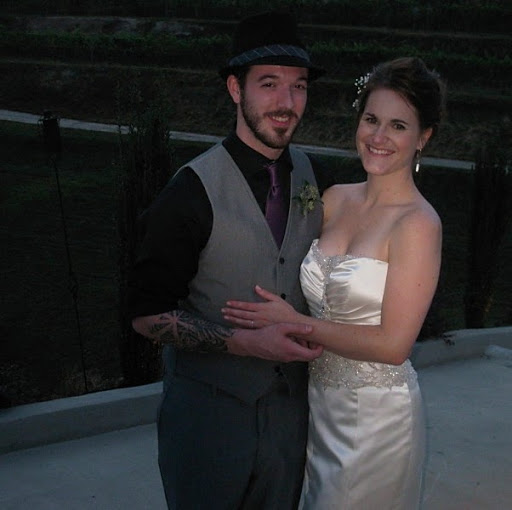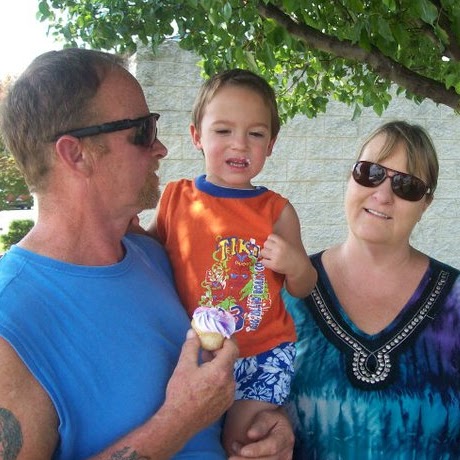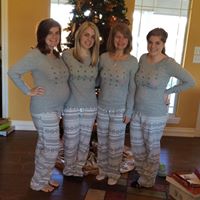Robyn T Oliver
age ~48
from Highland Park, IL
- Also known as:
-
- Robyn Teresa Oliver
- Robyn Oliver Cox
- Robyn Toliver
- Michelle A Cervantez
- Phone and address:
- 1010 Burton Ave, Highland Park, IL 60035
Robyn Oliver Phones & Addresses
- 1010 Burton Ave, Highland Park, IL 60035
- 1862 Guilder Gln, Escondido, CA 92029 • 7607464044
- San Diego, CA
- Berwyn, IL
- 3381 Frederick St, Philadelphia, PA 19129 • 2158440510
- 614 48Th St, Philadelphia, PA 19143 • 2154721540
- Long Grove, IL
- Fort Wayne, IN
- Long Grove, IL
- 4621 Cedar Ave, Philadelphia, PA 19143 • 2157297455
Work
-
Position:Administrative Support Occupations, Including Clerical Occupations
Education
-
Degree:High school graduate or higher
Resumes

Robyn Oliver
view sourceUs Patents
-
Methods Of Direct Manipulation Of Multi-Layered User Interfaces
view source -
US Patent:20210109611, Apr 15, 2021
-
Filed:Dec 21, 2020
-
Appl. No.:17/128489
-
Inventors:- San Diego CA, US
Robyn Teresa OLIVER - Highland Park IL, US
Robert TARTZ - San Marcos CA, US
Douglas BREMS - San Diego CA, US
Suhail JALIL - Poway CA, US -
International Classification:G06F 3/041
G06F 3/01
G06F 3/044
G06F 3/0488
G06F 3/0354
G06F 3/048
H03K 17/96
G06F 1/3231 -
Abstract:In some embodiments, a processor of the mobile computing device may receive an input for performing a function with respect to content at the mobile device in which the content at the mobile device is segmented into at least a first command layer having one or more objects and a second command layer having one or more objects. The processor may determine whether the received input is associated with a first object of the first command layer or a second object of the second command layer. The processor may determine a function to be performed on one of the first or second objects based on whether the first command layer or the second command layer is determined to be associated with the received input, and the processor may perform the determined function on the first object or the second object.
-
Computing Device And Extended Reality Integration
view source -
US Patent:20210034222, Feb 4, 2021
-
Filed:Jan 13, 2020
-
Appl. No.:16/741617
-
Inventors:- San Diego CA, US
Robert TARTZ - San Marcos CA, US
Robyn Teresa OLIVER - Highland Park IL, US -
International Classification:G06F 3/0481
H04N 13/332
G06T 19/00
G06F 3/16 -
Abstract:Techniques are provided for integrating mobile device and extended reality experiences. Extended reality technologies can include virtual reality (VR), augmented reality (AR), mixed reality (MR), etc. In some examples, a synthetic (or virtual) representation of a device (e.g., a mobile device, such as a mobile phone or other type of device) can be generated and displayed along with VR content being displayed by a VR device (e.g., a head-mounted display (HMD)). In another example, content from the device (e.g., visual content being displayed and/or audio content being played by the device) can be output along with VR content being displayed by the VR device. In another example, one or more images captured by a camera of the device and/or audio obtained by a microphone of the device can be obtained from the device by a virtual reality device and can be output by the virtual reality device.
-
Methods Of Direct Manipulation Of Multi-Layered User Interfaces
view source -
US Patent:20190113995, Apr 18, 2019
-
Filed:Aug 13, 2018
-
Appl. No.:16/101692
-
Inventors:- San Diego CA, US
Robyn Teresa Oliver - Escondido CA, US
Robert Tartz - San Marcos CA, US
Douglas Brems - San Diego CA, US
Suhail Jalil - Poway CA, US -
International Classification:G06F 3/041
G06F 3/0354
G06F 3/01 -
Abstract:In some embodiments, a processor of the mobile computing device may receive an input for performing a function with respect to content at the mobile device in which the content at the mobile device is segmented into at least a first command layer having one or more objects and a second command layer having one or more objects. The processor may determine whether the received input is associated with a first object of the first command layer or a second object of the second command layer. The processor may determine a function to be performed on one of the first or second objects based on whether the first command layer or the second command layer is determined to be associated with the received input, and the processor may perform the determined function on the first object or the second object.
-
Methods For Detecting Device Context In Order To Alter Touch Capacitance
view source -
US Patent:20190114005, Apr 18, 2019
-
Filed:Aug 13, 2018
-
Appl. No.:16/101750
-
Inventors:- San Diego CA, US
Robyn Teresa Oliver - Escondido CA, US
Robert Tartz - San Marcos CA, US
Douglas Brems - San Diego CA, US
Suhail Jalil - Poway CA, US -
International Classification:G06F 3/044
G06F 3/01
H03K 17/96 -
Abstract:Methods, devices, non-transitory processor-readable media of various embodiments may enable contextual operation of a mobile computing device including a capacitive input sensor, which may be a rear area capacitive input sensor. In various embodiments, a processor of a mobile computing device including a rear area capacitive input sensor may monitor sensor measurements and generate an interaction profile based on the sensor measurements. The processor of the mobile computing device may determine whether the interaction profile is inconsistent with in-hand operation and may increase sensitivity of the capacitive input sensor in response to determining that the interaction profile is inconsistent with in-hand operation.
-
Selective Reduction Of Blue Light In A Display Frame
view source -
US Patent:20180130446, May 10, 2018
-
Filed:Jul 28, 2017
-
Appl. No.:15/663691
-
Inventors:- San Diego CA, US
Min DAI - San Diego CA, US
Robyn Teresa OLIVER - San Diego CA, US -
International Classification:G09G 5/10
G09G 5/04 -
Abstract:In an embodiment, a user equipment (UE) coupled to a display screen enters into a reduced blue light (RBL) mode. The UE determines, while operating in accordance with the RBL mode, a degree of blue light reduction in at least a portion of a display frame to be output on the display screen using at least one RBL rule from a set of RBL rules that is based upon one or more of (i) application-specific information of an application that is contributing image data to the portion of the display frame, and (ii) content-specific information that characterizes the image data in the portion of the display frame. The UE selectively reduces the blue light in the at least a portion of the display frame based on the determining. The UE sends the display frame with the selectively reduced blue light portion to the display screen for output.
-
Method And Apparatus For Providing Dynamically Positioned Controls
view source -
US Patent:20170300205, Oct 19, 2017
-
Filed:Apr 3, 2017
-
Appl. No.:15/477814
-
Inventors:- San Diego CA, US
Arthur Pajak - San Diego CA, US
Chad Willkie - Cardiff by the Sea CA, US
Robyn Oliver - San Diego CA, US -
International Classification:G06F 3/0484
G06F 3/0481
G06F 3/0482
G06F 3/0488 -
Abstract:Methods and apparatuses for providing dynamically positioned UI controls are disclosed. In one aspect, the method comprises performing a calibration a client device to facilitate ergonomic placement of at least one control element associated with a virtual control on the display. Calibration comprises prompting a user to grip the device in a first orientation. Then one or more grip locations at which the device is being gripped while in the first orientation are detected. The calibration also comprises prompting the user to touch a region of the display while maintaining the orientation and the grip. A touch input is detected within the display region subsequent to the prompting. Then, subsequent to the calibration, the at least one control element can be displayed on the display based on the calibration.
-
Using Capacitance To Detect Touch Pressure
view source -
US Patent:20170010732, Jan 12, 2017
-
Filed:Jul 9, 2015
-
Appl. No.:14/795699
-
Inventors:- San Diego CA, US
Galit Hofree - San Diego CA, US
Robert Scott Tartz - San Marcos CA, US
Robyn Teresa Oliver - San Diego CA, US
Jonathan Karl Kies - Encinitas CA, US
Virginia Walker Keating - San Diego CA, US -
International Classification:G06F 3/041
G06F 3/0488
G06K 9/62
G06F 3/044 -
Abstract:Aspects of the disclosure are related to a method for determining a touch pressure level on a touchscreen, comprising: detecting a touch event by the touchscreen; obtaining data relating to features associated with the touch event comprising a capacitance value, a touch area, and/or a touch duration; and determining a touch pressure level based on one or more of the features.
Medicine Doctors

Robyn C. Oliver
view sourceSpecialties:
Family Medicine
Work:
Allina Health Medical ClinicAllina Health Cottage Grove Clinic
8611 W Pt Douglas Rd S, Cottage Grove, MN 55016
6514581884 (phone), 6512410345 (fax)
8611 W Pt Douglas Rd S, Cottage Grove, MN 55016
6514581884 (phone), 6512410345 (fax)
Education:
Medical School
University of New Mexico School of Medicine
Graduated: 1997
University of New Mexico School of Medicine
Graduated: 1997
Procedures:
Hearing Evaluation
Vaccine Administration
Vaccine Administration
Conditions:
Acute Upper Respiratory Tract Infections
Attention Deficit Disorder (ADD)
Fractures, Dislocations, Derangement, and Sprains
Abnormal Vaginal Bleeding
Acne
Attention Deficit Disorder (ADD)
Fractures, Dislocations, Derangement, and Sprains
Abnormal Vaginal Bleeding
Acne
Languages:
Chinese
English
French
Spanish
English
French
Spanish
Description:
Dr. Oliver graduated from the University of New Mexico School of Medicine in 1997. She works in Cottage Grove, MN and specializes in Family Medicine. Dr. Oliver is affiliated with United Hospital.
Classmates

Robyn Oliver
view sourceSchools:
Carrollton Elementary School Carrollton GA 1995-2000
Community:
Suzanne Suzi, Anita Walker, Anne Archer

Robyn Oliver
view sourceSchools:
Palmetto High School Williamston SC 2000-2004

Robyn Oliver (Smart)
view sourceSchools:
Catherine McAuley High School Portland ME 1987-1991
Community:
Rosemarie Weikert, Jess Moore, Colin Elgood, Kelly Brennan

Robyn Oliver (Cotton)
view sourceSchools:
Gainesville High School Gainesville FL 1978-1982
Community:
Nancie Crawford, Michelle Dent

Robyn Oliver-Hunter (Oli...
view sourceSchools:
Bergen School Jersey City NJ 1966-1981
Community:
Marcy Rosenbaum, Barbara Alosio, Cardrian Massey, Gregory Lions, Dean Ambrose, Linda Cala

Robyn Oliver-Hunter (Oli...
view sourceSchools:
Bergen School Jersey City NJ 1966-1977
Community:
Marcy Rosenbaum, Barbara Alosio, Cardrian Massey, Gregory Lions, Dean Ambrose, Linda Cala

Robyn Oliver
view sourceSchools:
Moravian Falls Elementary School Moravian Falls NC 1989-1993
Community:
Lee Waters, Paul Boston, Tony Kerley, Chad Treadway, Tim Stone, Keith Bumgarner, Luke Martin, Brandon Miller, Angel Same, Tina Nichols

Robyn Oliver | Dayton Coo...
view sourceGoogleplus

Robyn Oliver

Robyn Oliver

Robyn Oliver

Robyn Oliver

Robyn Oliver
Tagline:
Practical Integrative Tharapies
Myspace
Youtube

Robyn Oliver
view source
Robyn Oliver Cabaday
view source
Robyn Oliver
view source
Robyn Oliver
view source
Robyn Oliver
view source
Robyn Oliver
view source
Robyn Maxine Oliver
view source
Robyn Oliver Blatt
view sourceGet Report for Robyn T Oliver from Highland Park, IL, age ~48





